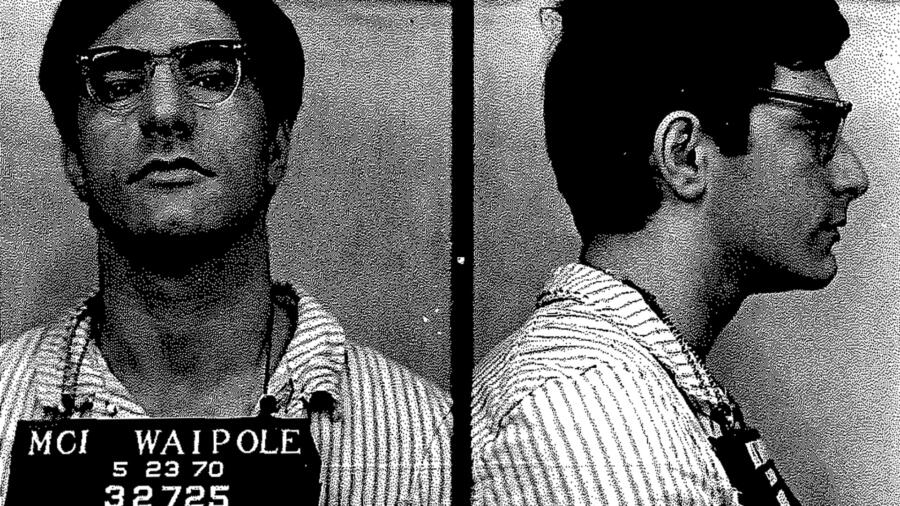Like the serial killers before him, Tony Costa was debonair, cunning and—to his detriment—overconfident. But Costa remains a relatively unknown true-crime figure despite the heinous nature of his crimes against women, murders that included dismemberment and necrophilia.
Costa, nicknamed the “Cape Cod Vampire” and “Cape Cod Cannibal,” was serving a life sentence for fatally shooting Patricia Walsh and Mary Anne Wysocki (whose bodies were found in pieces, mutilated) when he killed himself in 1974. Though he had been convicted of the two murders, according to investigators and his defense team, he was suspected of brutally killing at least three other women.
Author and journalist Casey Sherman reviewed stacks of evidence to deconstruct Costa and his supposed alter ego—which he blamed for his propensity to kill.
Sherman spoke to A&E True Crime about his new book, Helltown: The Untold Story of a Serial Killer on Cape Cod, which not only analyzes Tony Costa’s murderous rampage in 1969 Massachusetts, but what Sherman describes as a “culture of toxic masculinity and systematic misogyny that dominated the time and…continues to shape our attitudes toward violence, especially against women, today.”
Costa excused his crimes by claiming they were the work of his alter ego named Cory. How did reviewing his unpublished memoir add to your understanding of his mindset when he carried out the murders?
It’s the first time a killer really puts himself or his ego at the crime scene. I pulled over 2,000 documents with regard to this case. That includes crime reports, police reports, trial transcripts, autopsy photos, crime scene photos, et cetera. They talk about the crimes, but they don’t bring you to the scene like Tony Costa did in his unpublished manuscript. For the first time, [we have] an idea of what it must have been like for those poor women to be lured into the woods or into these very unusual circumstances with this serial killer.
How did the drug landscape at the time of the women’s murders influence the police investigation?
It greatly influenced how police investigated this case because, in 1969, Provincetown and many other areas, like Greenwich Village [in New York] and San Francisco, were transient areas for hippies to live and cultivate their lifestyles. So when these young women turn up missing, the police really didn’t take it too seriously because they thought that these kids were getting into VW buses and traveling the country. And that’s what young people did at the time.
Had these murders taken place in 2022, I think investigators would’ve jumped on it right away as opposed to taking weeks—and even months—to investigate these disappearances.
[Stream episodes of Invisible Monsters: Serial Killers in America in the A&E App.]
Some of [the victims’] own families seemed to be laissez-faire with regard to how long these young women were missing. They didn’t know where their daughters were. That was shocking to me.
The disappearances of Patricia Walsh and Mary Anne Wysocki were much different because once they disappeared, their families realized right away that something bad had happened to them.
How did Costa, a drug informant, get into good favor with the police department? Also, how did his close relationship with law enforcement allow him to commit multiple slayings and remain at large?
Tony Costa was the ultimate chameleon. His greatest strength as a criminal was his charm. So he worms his way into the Provincetown Police Department and gets access to some of the investigators—especially when they started to really focus on the disappearances of Mary Anne Wysocki and Patricia Walsh.
Meanwhile, he’s playing on the other side of the street. He’s using his charm to lure young women to their deaths. And he’s got access to drugs. So here’s a guy that was able to keep his finger on parts of the investigation. One of the things I also found fascinating about this is he didn’t hide from law enforcement. He openly baited them into a cat-and-mouse game because he thought he was smarter than they were.
In the book you mention several red flags about Costa’s adolescent behavior, specifically graphic animal abuse and attempted sexual assault. What does this information about Costa add to our understanding of serial killers?
I’ve covered 30 to 50 homicides. The first investigation I was ever a part of was the Boston Strangler case, and that’s because my aunt [Mary Sullivan] was the youngest and final victim of that notorious 1960s murder spree [committed by Albert DeSalvo].
I’ve been tracking and studying serial killers for well over 30 years, and you often see moments in their childhoods that dictate who they are going to be as adults. Tony Costa was fascinated by taxidermy as an adolescent and had a love-hate relationship with his mother, which he then projected onto his victims. For anybody that has seen the [Alfred] Hitchcock film Psycho, Costa was the living Norman Bates.
You’re used to writing about serial killers’ victims. What stuck with you the most about Costa’s victims?
It’s the reason why I never applied focus on Tony Costa’s murders [before the book]. I grew up in Cape Cod where these murders occurred. I heard about the Tony Costa case growing up, and it was described in a joking manner. They still call him “Tony Chop Chop” because he dismembered his victims. Because I had gone down such a dark path investigating my own aunt’s murder, I was reluctant to revisit a serial murder case like this. It wasn’t until the height of the pandemic [when]…I dug into the case a little bit and was shocked at how disturbing it was and how quickly it was forgotten by the American media and the public at large.
Because of my aunt and my understanding of what a family goes through, I wanted these women to be fully developed “characters,” but they’re not just there for Tony Costa’s amusement. I wanted to show these were women who had hopes and dreams. They were daughters, they were sisters and they were best friends. So many people lost a part of themselves when these women were taken away from them. I wanted to make sure that wasn’t lost in the writing of Helltown.
You suggest that Costa had an attraction to his mother. How do you believe that motivated his killing spree? If not, what do you think pushed him to kill?
I do think he had a love-hate relationship with his mother, which triggered him to commit these murders. These weren’t romanticized killings or stranglings—these were the most brutal murders that I’ve ever seen, and I’ve covered dozens of homicides. Tony Costa was the most brutal serial killer since Jack the Ripper. I’ve studied the autopsy photos, I’ve studied the crime scene photos. These women were shot. They were stabbed, slashed and dismembered. There’s a real brutality here that Tony Costa projected onto these women, and I think it all goes back to his relationship with his mother.
After his father died during World War II, Tony Costa wanted to keep his mother all to himself, but his mother got remarried. His mother had another child, and I think the love that she had to provide to those two other people in her life created a void in Costa’s heart and brain.
Why do you believe Costa’s crimes aren’t more well known to the mainstream?
Tony Costa’s murders were a prelude to the Manson murders, which happened that same year in 1969… The Manson murders are still heavily discussed today. It’s part of the allure of an evil person like Charles Manson, but it’s also the victims that he went after, famous people like Sharon Tate.
What do you think Costa’s case offers to the public’s understanding of true crime?
[Costa’s case] has all been all but lost to history. [The book] provides some context and ensures that people don’t forget this case and the victims. Some readers have never heard of Tony Costa before, but they can rattle off serial killers that have reached that level of infamy, whether it’s Ted Bundy, Charles Manson, Jack the Ripper or John Wayne Gacy.
To me, Costa’s crimes to me were as disturbing, if not more disturbing. To this day, I’m haunted by the autopsy photos and the crime scene photos.
Women have to obviously have a better understanding of their surroundings, as do men It’s easy to get lured into a situation because someone is nice to them, or someone is charming and comforting. Everyone should be careful about the people they bring into their lives.
Related Features:
Tony Costa Was a Serial Killer—and a Babysitter
How to Talk to Serial Killers: An Interview with ‘Mindhunter’ John Douglas


